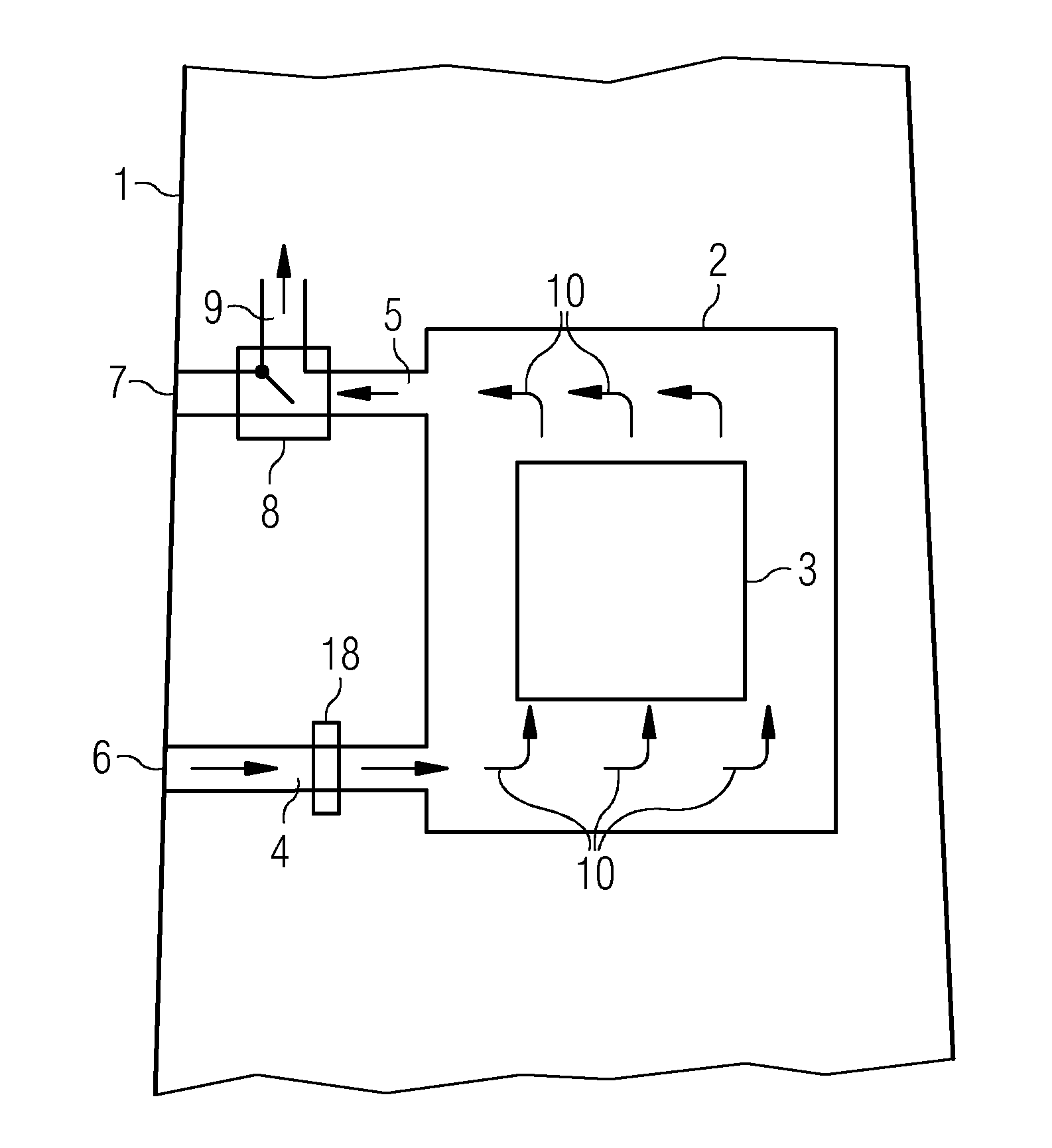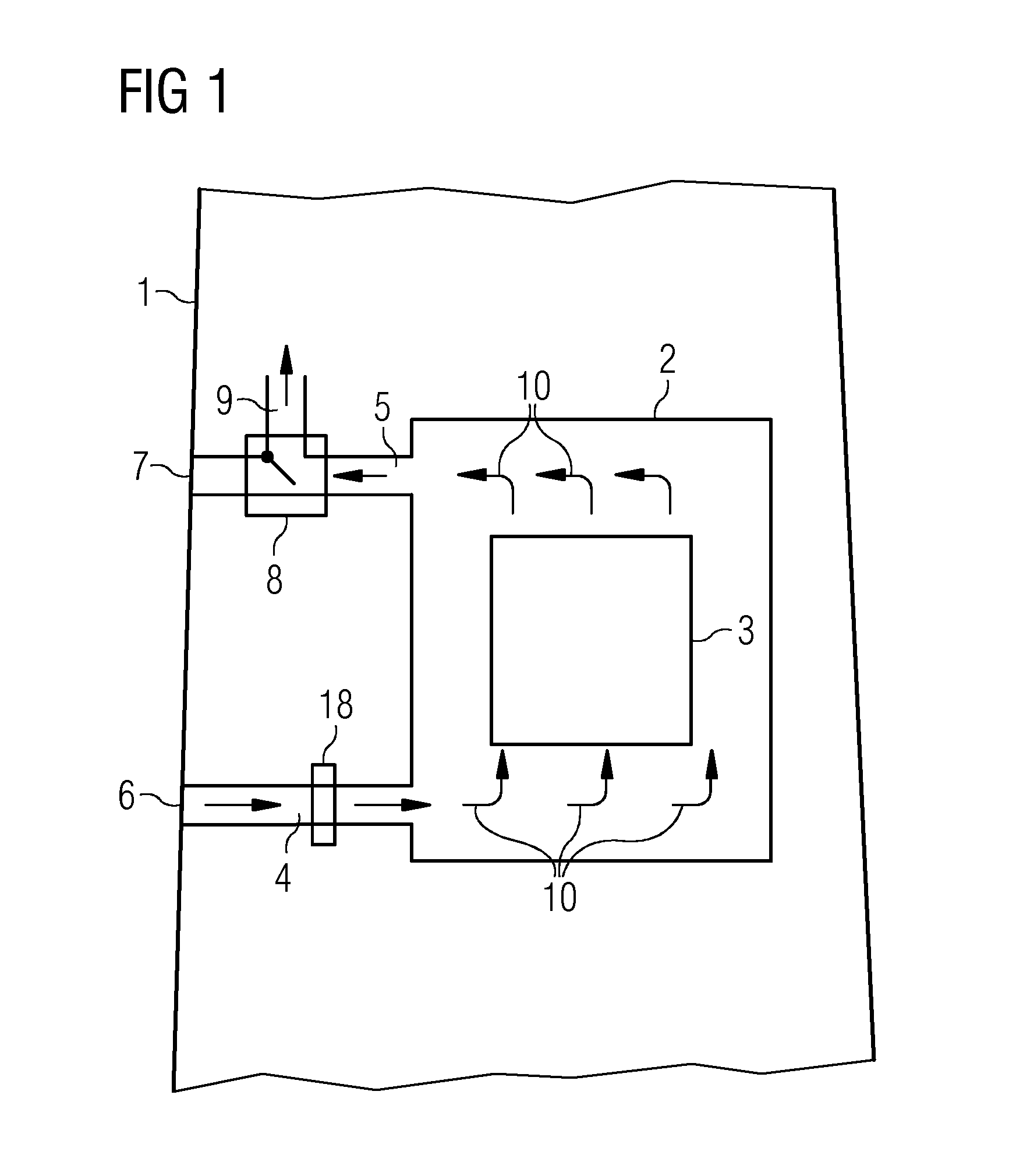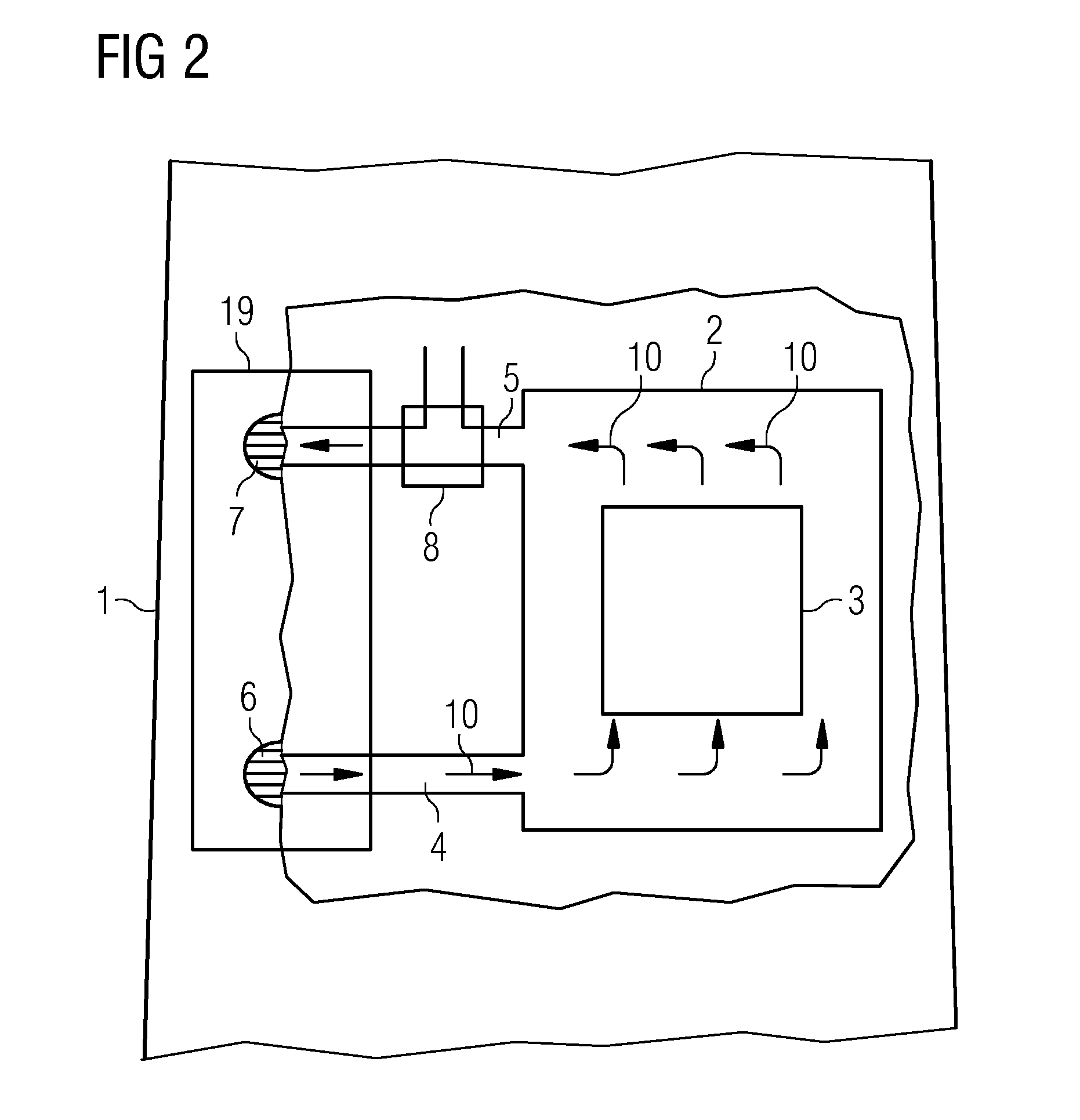De-humidifying system
a technology of dehumidification system and wind turbine, which is applied in the direction of mechanical equipment, machines/engines, electric generator control, etc., can solve the problems of hindering water and moisture from entering the tower, affecting the heating and ventilation of the interior of the wind turbine, and affecting the efficiency of the wind turbine. , to achieve the effect of reducing the relative humidity inside the tower, avoiding the entry of moisture or rain into the tower, and optimizing the heating and ventilation of the interior of the tower
- Summary
- Abstract
- Description
- Claims
- Application Information
AI Technical Summary
Benefits of technology
Problems solved by technology
Method used
Image
Examples
Embodiment Construction
[0026]FIG. 1 shows a dehumidifying system of a wind turbine tower. The tower 1 comprises a chamber 2 with an electrical arrangement 3 that emits waste heat. The electrical arrangement 3 is cooled by an air flow 10.
[0027]A first tube 4 connects the interior of the chamber 2 to the exterior of the tower 1. The first tube 4 is connected to a through-hole 6 in the wall of the tower 1. The first tube 4 allows air to flow from the outside of the tower 1 into the chamber 2.
[0028]A second tube 5 connects the interior of the chamber 2 to the exterior of the tower 1. The second tube 5 is connected to a through-hole 7 in the tower wall. The second tube 5 allows air to flow from the chamber 2 to the exterior of the tower 1.
[0029]The air 10 flows through the through-hole 6 and the first tube 4 into the chamber 2. In the chamber 2 the air gets warmed by the electrical arrangement 3. The warm air flows along the second tube 5 and through the through-hole 7 to the exterior of the tower 1. A fan 18 ...
PUM
 Login to View More
Login to View More Abstract
Description
Claims
Application Information
 Login to View More
Login to View More - R&D
- Intellectual Property
- Life Sciences
- Materials
- Tech Scout
- Unparalleled Data Quality
- Higher Quality Content
- 60% Fewer Hallucinations
Browse by: Latest US Patents, China's latest patents, Technical Efficacy Thesaurus, Application Domain, Technology Topic, Popular Technical Reports.
© 2025 PatSnap. All rights reserved.Legal|Privacy policy|Modern Slavery Act Transparency Statement|Sitemap|About US| Contact US: help@patsnap.com



